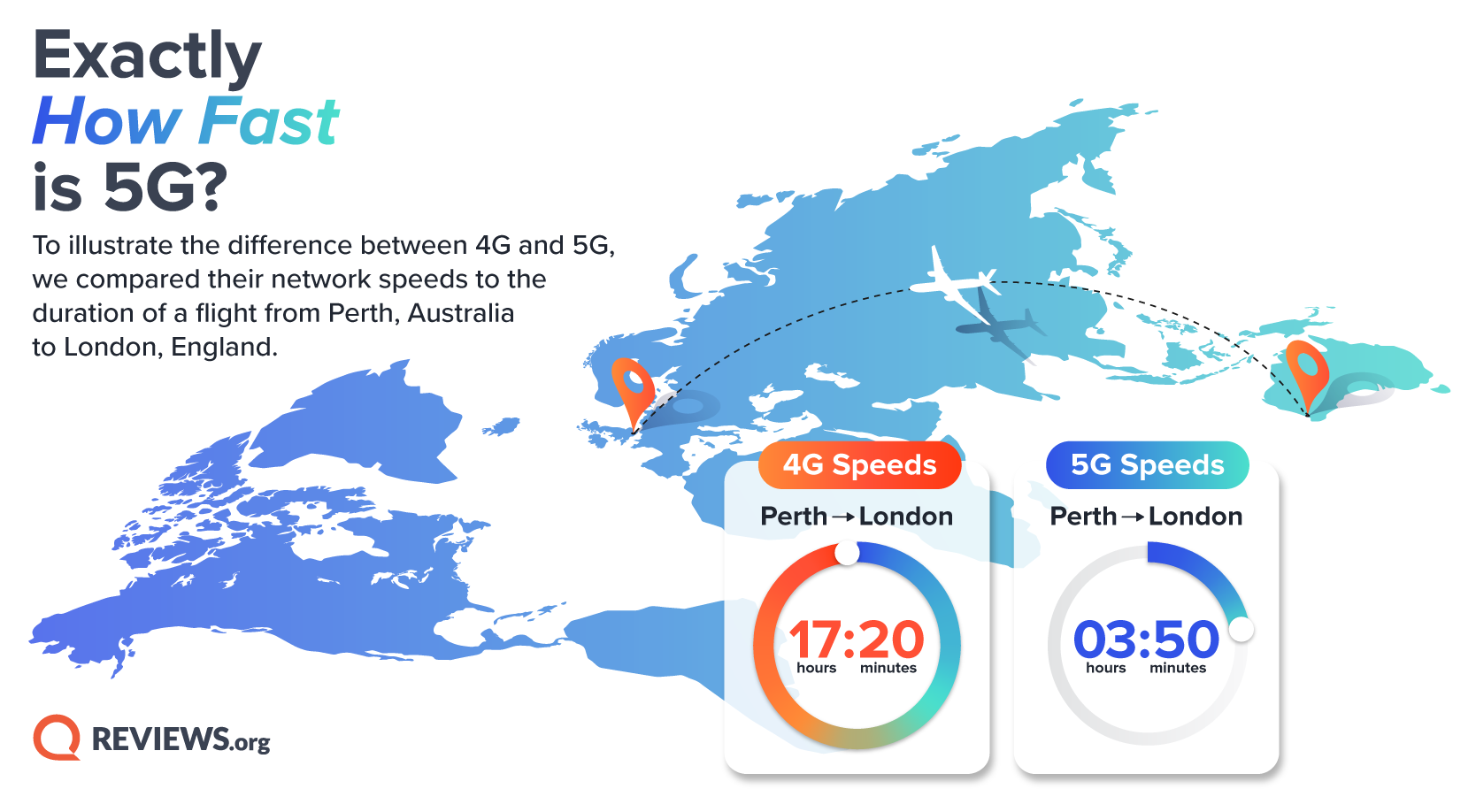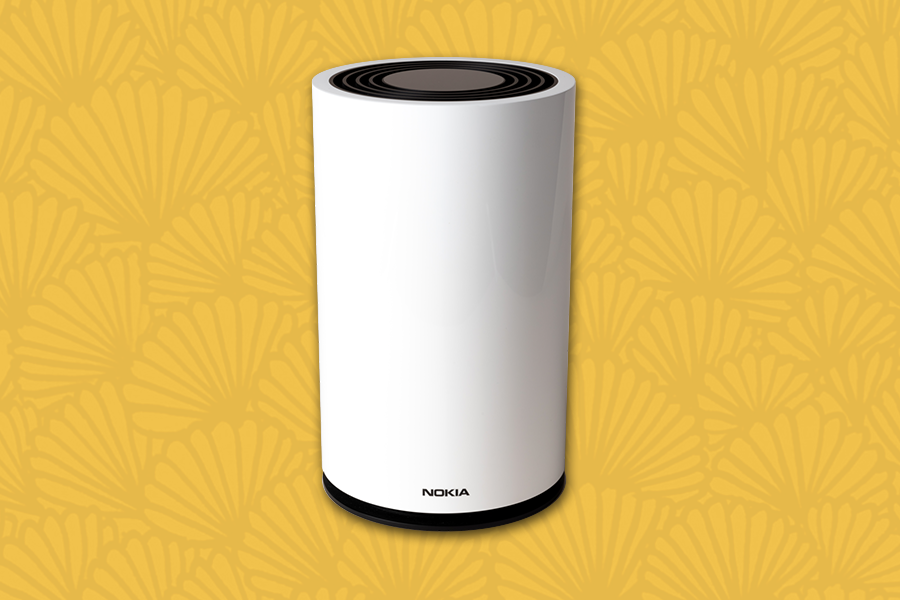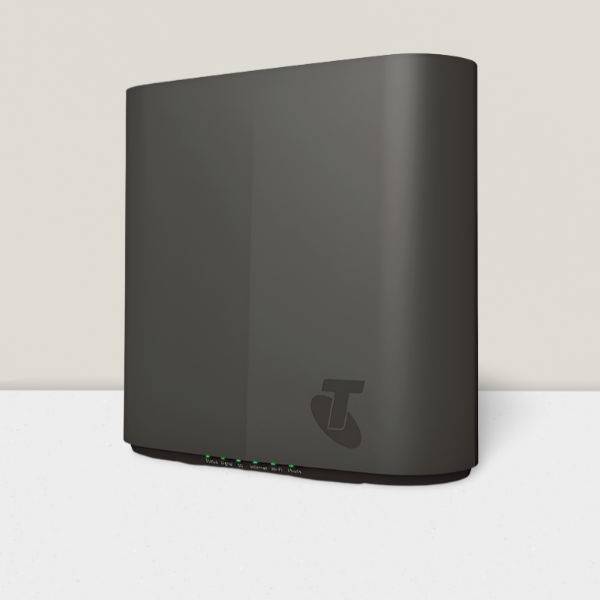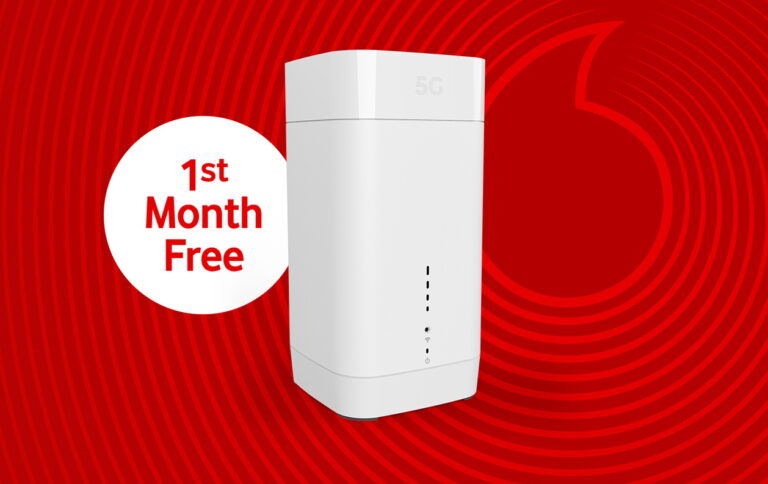Everything you need to know about 5G mobile and internet plans in Australia.
5G Australia: network, coverage and providers explained
5G is here, and it's a big deal. Remember the first iPhone? That was a landmark evolution of the mobile phone that could take photos, play music and access the world wide web. However, it wasn't until the iPhone 3G was released that things started to resemble the modern smartphone experience.
The reason why? It had 3G. The iPhone 3G was a powerful phone for its time but the real key to the future was in its 3G connectivity. Then things jumped forward again in 2012 with the iPhone 5, a handset capable of delivering blistering 4G/LTE speeds up to 100Mbps (the theoretical max).
5G is the next step in this evolution, and it's coming to a mobile tower (and smartphone) near you. Here's everything you need to know about the 5G rollout in Australia.
Where can I get 5G?
Global adoption of 5G wireless technology kicked off in 2019. Since then, Telstra, Vodafone and Optus have all made significant progress on rolling out their 5G networks across the country.
Telstra has the widest footprint, covering over 85% of the Australian population.
Vodafone has picked up the pace too with coverage in around 1,000 suburbs across. The official line these days is that "Vodafone’s 5G network now covers more than 96 per cent of the Australian population across the nation’s 10 largest cities."
Optus is a little more tight-lipped about the facts and figures surrounding its 5G network, but currently has over 1,200 live 5G sites, that cover over 1.4 million homes.
Looking for a better snapshot of how good 5G coverage is in your area? Be sure to check out the 5G coverage map below.

Best 5G mobile plans in Australia
Do you feel the need for speed?
What is 5G?
5G (Fifth Generation) is the latest in wireless communication technology for mobile data networks. Futuristic technologies, such as smart driving cars and networked agriculture solutions, are being used to sell the big picture of 5G. For most of us though, the immediate benefit will mean faster download speeds and better ping on our mobile devices.
In the long run, 5G won't just improve on 4G. It'll replace it. That future is still a while off through. It'll be some time before we have ubiquitous 5G coverage that's comparable to 4G coverage.
Even now though, it's already clear that the speed and latency benefits of 5G are unquestionable. For the everyday user, 5G will slowly, but eventually, become the new norm when it comes to mobile coverage. You won’t have to give it much thought once the rollout is complete (outside of upgrading to a 5G handset).
If anything, the biggest question you’re likely to face when the 5G rollout is complete is whether you are better off on NBN internet plan or a 5G Home Internet one.
5G coverage in Australia
Before we explore the finer details of the 5G upgrade, let's see if you have 5G coverage already. To see where is 5G available in Australia, use the 5G coverage map below.
Click the big orange button, select your desired network provider from the dropdown (e.g. Telstra, Optus or Vodafone).
To find out if you have 5G coverage in your area, use the (+) and (-) icons in the top-left corner of the map to navigate to your area. For example, if you want to search for 5G broadband coverage in Sydney, zoom right in and drag the map with your cursor to zero in on your address.
Telstra 5G coverage
It probably comes at no surprise that Telstra is leading the 5G race in Australia. At last estimate, Telstra 5G had made its way to 85% of Australians and the biggest 5G network gets bigger by the day.
Telstra currently offers 5G access on all of its Upfront SIM plans and prepaid mobile plans (though speed caps apply to select plans).
Optus 5G coverage
Telstra may have the most expansive 5G network in Australia, the second-largest mobile network provider, Optus, provides a competitive 5G experience too. According to OpenSignal's ongoing 5G experience report, Optus 5G boasts the fastest 5G download speeds out of all three providers.
If you're looking for a list of 5G plans available from Optus, you'll find them in the widget below.
Vodafone 5G coverage
Vodafone may be the smallest 5G network in Australia but don't get too caught up on that. The provider is gaining ground all the time and still manages to offer impressive service. Even though the Vodafone 5G network has to make some ground to catch up on coverage, the current state of the network performs admirably.
Vodafone includes 5G access on most of its SIM only, prepaid and other mobile plans. You can find the list in the widget below.
Which providers offer 5G in Australia?
While access to 5G was initially restricted to Australia's big three carriers, it has since trickled out to include a number of MVNOs. At the time of writing, there are over 15 providers in Australia offering 5G mobile and broadband plans: that figure includes major network providers Telstra, Optus and Vodafone, plus MVNO players like SpinTel, Aussie Broadband, and Southern Phone.
5G home broadband providers
5G mobile providers
How fast is 5G in Australia?
With potential speeds of 20Gbps, 5G is as not only a nifty upgrade on the 4G speeds that smartphone users might be used to, but also a potential alternative for fixed-line internet replacement if you're someone who can’t access reliable NBN.
Telstra expects its customers to average between 50 and 300Mbps on 5G. On the other hand, Optus advertises typical evening speeds of 214Mbps on its 5G network and backs it up with a 50Mbps speed guarantee. It’s a far cry from the 20Gbps promised above, but it's still a decent upgrade compared to Australia’s current 4G mobile network speeds.
Another useful indicator when it comes to 5G internet speed in Australia is Opensignal. The global network monitoring organisation recently published a speed test report that found the Australian 5G users experienced download speeds of 182.3Mbps on average (between the 1st of March and 31st of May 2023) and that, of the three providers, Optus came out on top (in Opensignal's analysis of Australia's mobile network providers) with average 5G speeds of 229.6Mbps across the sampling period.
5G vs 4G: How much faster is 5G?
Even this early on in the 5G rollout, the next-generation mobile network has provided much faster speeds on average than the existing 4G network. To illustrate how much faster that is exactly, we used flight durations to demonstrate how much time you could theoretically save on 5G.

The promise of faster mobile download speeds has been the biggest selling point for 5G in Australia but there are more benefits to consider when comparing 5G and 4G network technologies. Here are the major differences between 4G and 5G network technologies:
- 5G is roughly five times faster than 4G
- 5G has a lower (better) latency than 4G
- 5G struggles with indoor coverage
For a deeper comparison of the two network technologies and a further breakdown of real-world speed improvements, head over to our comprehensive 5G vs 4G guide.
5G frequency in Australia
There are three different types of 5G technology: low-band 5G, mid-band sub 6 5G, and mmWave 5G. mmWave frequencies are much faster but don't travel as far and have trouble penetrating walls. Low-band frequencies offer slower download speeds but are much more efficient for indoor coverage.
The lack of a single standard frequency isn't new when it comes to telecommunication networks, but it is a little bit of a headache for consumers. For example, only iPhone 13 models sold in the U.S. are compatible with mmWave 5G. This caused a bit of fuss after the iPhone 13 reveal because mmWave 5G has the highest theoretical download speed out of the three at 20Gbps. At the time, the rest of the world felt like it drew the short straw.
The thing is, we don't have much mmWave 5G in Australia yet. Every 5G network in Australia currently uses sub 6 5G, though Vodafone is retooling some of its 4G infrastructure to offer low-band 5G. Don't let that worry you though. The sub 6 3.5GHz spectrum used by our telcos is still capable of 1Gbps download speeds and is better at penetrating walls than mmWave, which makes it a more reliable choice for 5G home broadband solutions.
And even if Sub 6 5G is still what most Australians currently have access to right now, all three providers have a small amount of mMWave coverage. Telcos began bidding on access to mmWave 5G at the beginning of 2021 and in April of the same year, all three networks purchased their share of the 26Ghz (mmWave) spectrum.
5G latency and bandwidth
On top of faster speeds, 5G also offers lower latency than 4G. That's a good thing.
Latency is the Round Trip Time (RTT) of your internet connection, the time it takes to send data from your device to the network and back again. The call and response time of every action you perform on the internet. Low latency is most commonly seen as a benefit for online gaming, where a millisecond’s delay can make all the difference. But 5G’s super-low 1ms latency will have benefits for future technologies, like self-driving cars, where a millisecond variance could pose a real risk.
Lastly, there's the number of connected devices a 5G connection can handle. In others words: Bandwidth. 5G will be able to manage more devices simultaneously than 4G is currently able to. That might not mean much if you’re on a super-fast NBN plan at the moment, with two to three people connected at once. But larger households, and those who can't get NBN, should look forward to better bandwidth on 5G.
5G phones Australia
5G smartphones have been available for several years now. They're no longer novel, but the standard for most brands.
Telstra, Optus, Vodafone, Numobile and Southern Phone all offer a selection of 5G smartphones; from Apple's 5G iPhone, to Google's own sixth-generation handset, consumers spoiled for choice.
If you are thinking of upgrading to a 5G smartphone, it comes with the proviso that you might not fully reap the benefits of 5G for some time still. If you're the type that hangs on to their handset for three to four years, there's nothing wrong with future-proofing your smartphone now. Here's a small selection of the most popular 5G smartphones available in Australia.
5G postpaid mobile plans
If you're looking for a 5G mobile plan, the most popular choices tend to be postpaid. In addition to Telstra, Optus, and Vodafone, a whole host of MVNOs including Aussie Broadband, Belong, Woolworths Mobile, numobile, and MATE now offer 5G mobile plans.
That said, 5G mobile plans, in some cases, remain a premium proposition. When it comes to MVNOs, you'll typically only find 5G on their most expensive plans. Getting 5G from an MVNO isn't necessarily a better deal than getting it from Telstra, Optus, or Vodafone in the way it is with 4G mobile plans.
Some postpaid 5G mobile plans are also capped to speeds of 250Mbps or less or only provide 5G on a "trial" basis. Even in situations where MVNOs do sell 5G at a cheaper price than the carriers do, it usually comes with a few strings attached.
Here are the cheapest postpaid 5G mobile plans from each provider:
5G prepaid mobile plans
While prepaid 5G plans aren't as common as their postpaid counterparts, they do exist. That said, they're rarely cheap. In some cases, you're looking at a minimum if $40 per recharge.
The prices can go even higher if you want next-generation connectivity on a prepaid plan and are picky about the network providing that service. Here's a selection of the cheapest 5G prepaid plans around:
5G home internet
5G Home Internet is available through Telstra, Optus, Vodafone, TPG plus some smaller providers like SpinTel. As mentioned above, it's an NBN alternative intended to replace your fixed-line broadband connection with a 5G modem that connects to the next-generation mobile network.
Optus was the first mover in 5G home internet, and has two plans: one capped to 100Mbps, and one with uncapped 5G speeds. Optus is currently saying that plan gets typical evening speeds of 225Mbps. Optus offers one month free on these plans, but if you leave within your first three years, you'll need to pay out the remainder of your modem. This is equivalent to $16 for each month left in your three-year term.
The only exception to this is if you're not consistently getting speeds of at least 50Mbps, in which case you leave without penalty.
Telstra advertises typical evening speeds between 50 and 600Mbps, and with the first month free, you can cancel and return the modem without paying a thing.
TPG Group telcos - Vodafone, TPG, iiNet, and Internode - also offer 5G home internet. You've got the choice of a plan capped to 50Mbps, or a plan capped to 100Mbps. While that's slower than the maximum speeds 5G can reach, it's in line with the most popular NBN tiers, while also being cheaper. Each of these telcos are offering one month free, and if you're not happy, you can simply cancel and return the modem.
Here's how each provider's 5G plans compare.
5G modems
In Australia, there are three primary 5G modem options available.
More will become available as 5G continues to rollout. In the meantime, you've got Telstra's second-generation 5G Home Modem and the Sagemcom F@st 5866T modem used by Vodafone and the rest of the TPG Group. Last but not least, there's the Nokia FastMile modem used by both Optus and Vodafone (plus a few other providers).
Here's a little more information on each 5G modem.
Nokia FastMile
The Nokia FastMile primarily used by Optus and SpinTel has a sharp, cylindrical design. It has an easy-to-read signal indicator that lets you know when your connection is struggling and supports WiFi 6.
The Nokia 5G Modem comes included with the Optus' 5G home internet plans, SpinTel's 5G home internet plans, and is one of the modem options used by the TPG Group.

Telstra 5G Modem 2
The second-generation Telstra 5G Home Modem offers support for WiFi 6, one configurable Ethernet WAN/LAN port plus four Ethernet ports for wired gigabit speeds, and one USB 3.0 port. It comes with an inbuilt, pre-activated SIM, so all you need to do is plug it in and connect. It's also got a set of colour-coded lights that promise to make it easier to speak your modem's language if you run into trouble.
Where its predecessor relied on a non-standalone implementation, the Telstra 5G Modem 2 comes with support for standalone 5G. In the right conditions, this promises to allow for even faster upload and download speeds and lower latency. Compared to its first-generation counterpart, this model also comes with support for additional 5G network bands, which means it'll operate in more locations and deliver faster speeds by making use of those extra frequencies.
Naturally, you can only get it with Telstra.

Sagemcom F@st 5866T modem
Some Vodafone customers will end up with the same Nokia FastMile 5G Gateway modem-router available from Optus, SpinTel and others. Meanwhile, others will end up with the Sagemcom F@st 5866T modem. Thankfully, while the looks vary, the capabilities found in the two devices do not.
As with its Nokia-made counterpart, the Sagemcom F@st 5866T features a color-based lighting system that communicates signal strength, as well as a trio of Ethernet jacks and a single USB port on the back. This same modem is also used by TPG Group providers like iiNet, TPG, and Internode.

5G vs NBN
One of the biggest questions surrounding the 5G rollout is whether it's got the grit to replace the NBN (National Broadband Network).
If we only consider speed, the answer would be yes. 5G is capable of speeds much faster than the NBN's highest speed tier and even its baseline 50Mbps is faster than many NBN plans on the market. With speeds like that, why wouldn't 5G replace the NBN?
Well, there are still a lot of unknowns at this stage. How stable will 5G home WiFi be? Will coverage be comprehensive enough for you to rely on 5G home internet as a fixed-line replacement? Also, how much will telcos charge for the privilege?
5G home internet will certainly replace some individual NBN connections, but it won't replace the need for the NBN. Fixed-line networks like the NBN have greater capacity, so are more resistant to congestion. For example, Telstra says it will only sell a limited number of 5G home internet services per cost to ensure each customer gets the performance they're paying for.
Is 5G worth it?
Whether 5G is worth it may depend on what you need it for and how much you're looking at paying extra for it.
If you want that lower latency for mobile gaming or the faster speed for streaming content in higher quality, it may be time to consider a 5G mobile plan. Alternatively, if you're finding your 4G home internet connection isn't quite up to the task then it might be time to take a look at the next step up in terms of speed.
That said, all the ways in which 5G offers an advantage have to be balanced against the fact that the 5G rollout is still a work in progress.
What is the best 5G network?
If you're measuring by size, then Telstra has the best claim to offering the best 5G network in Australia right now. However, according to the most recent OpenSignal data, Optus has the lead on speeds.
Do I need a 5G phone to get 5G?
Yes. You will need a 5G smartphone or 5G tablet in order to get 5G. You'll also need a 5G mobile plans and you'll only be able to get 5G in places where your provider has 5G coverage.
Now that you know all there is to know about 5G in Australia, here's a glance at the most popular 5G plans available in Australia right now to give you an idea of how much that 5G connectivity will cost you.
Related Articles

















